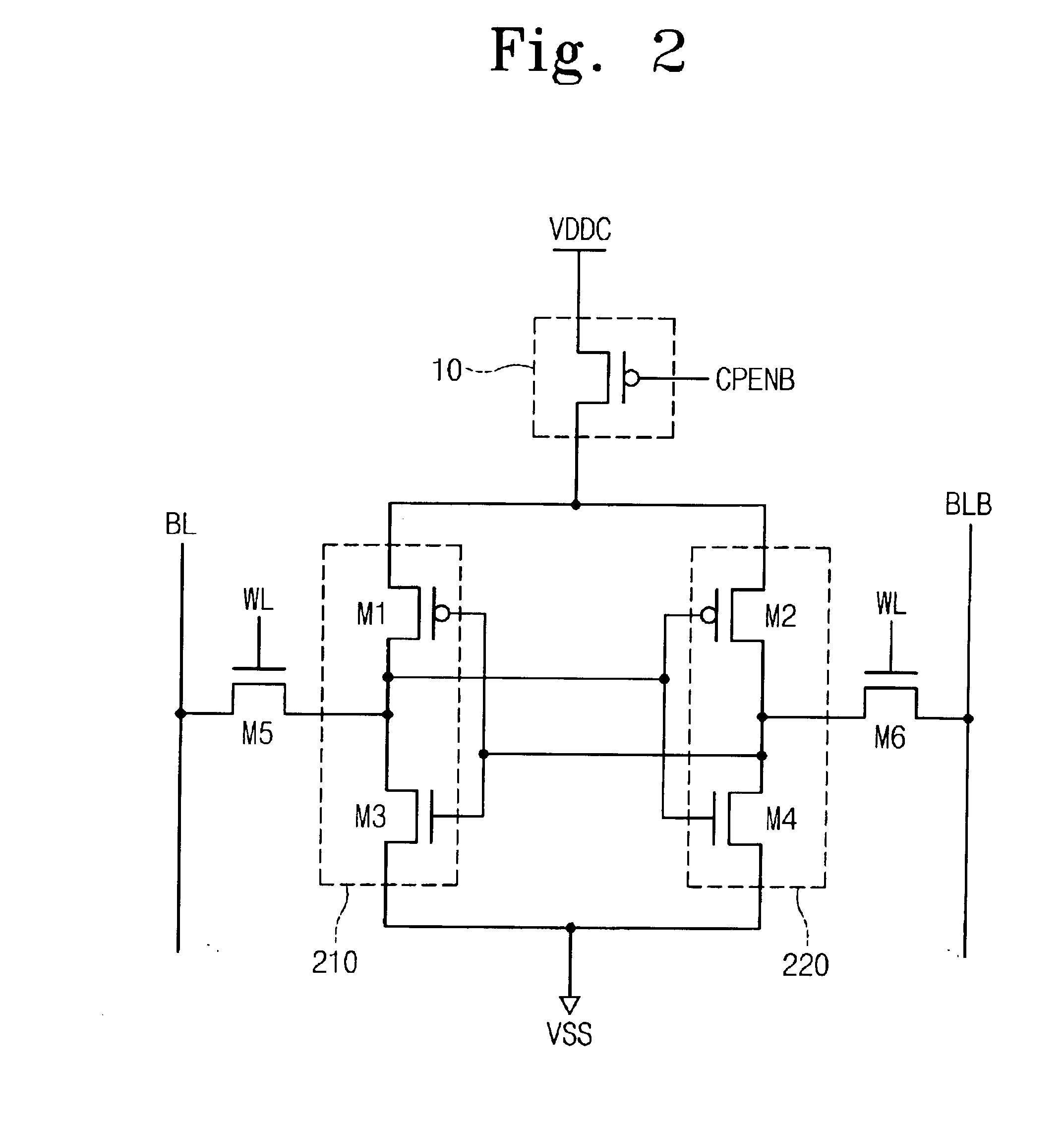Circuits and methods for screening for defective memory cells in semiconductor memory devices
a technology of memory cells and circuits, applied in electronic circuit testing, digital storage, instruments, etc., can solve the problems of increasing the testing time and abnormal leakage current flowing through the memory cells, and achieve the effect of efficient screening for defective or weak memory cells
- Summary
- Abstract
- Description
- Claims
- Application Information
AI Technical Summary
Benefits of technology
Problems solved by technology
Method used
Image
Examples
Embodiment Construction
[0022]In the following description, exemplary embodiments of the invention are discussed in detail to provide a thorough understanding of the present invention. It is to be understood, however, that the description of preferred embodiments is for purposes of illustration and that nothing herein should be construed as placing any limitation of the invention. Indeed, it will be apparent to those of ordinary skill in the art that present invention may be practiced without these specific details
[0023]FIG. 2 illustrates a circuit construction that is used for screening a SRAM cell according to an embodiment of the present invention. Referring to FIG. 2, a SRAM cell comprises a CMOS-type cell, including PMOS transistors M1 and M2, and NMOS transistors M3˜M6. The transistors M1˜M4 are cross-coupled with their gates, drains, and sources to form latch circuits 210, 220, as is well known in the art. Each NMOS transistor M5 and M6 is connected to a respective bitline BL and BLB, and has a gate...
PUM
 Login to View More
Login to View More Abstract
Description
Claims
Application Information
 Login to View More
Login to View More - R&D
- Intellectual Property
- Life Sciences
- Materials
- Tech Scout
- Unparalleled Data Quality
- Higher Quality Content
- 60% Fewer Hallucinations
Browse by: Latest US Patents, China's latest patents, Technical Efficacy Thesaurus, Application Domain, Technology Topic, Popular Technical Reports.
© 2025 PatSnap. All rights reserved.Legal|Privacy policy|Modern Slavery Act Transparency Statement|Sitemap|About US| Contact US: help@patsnap.com



